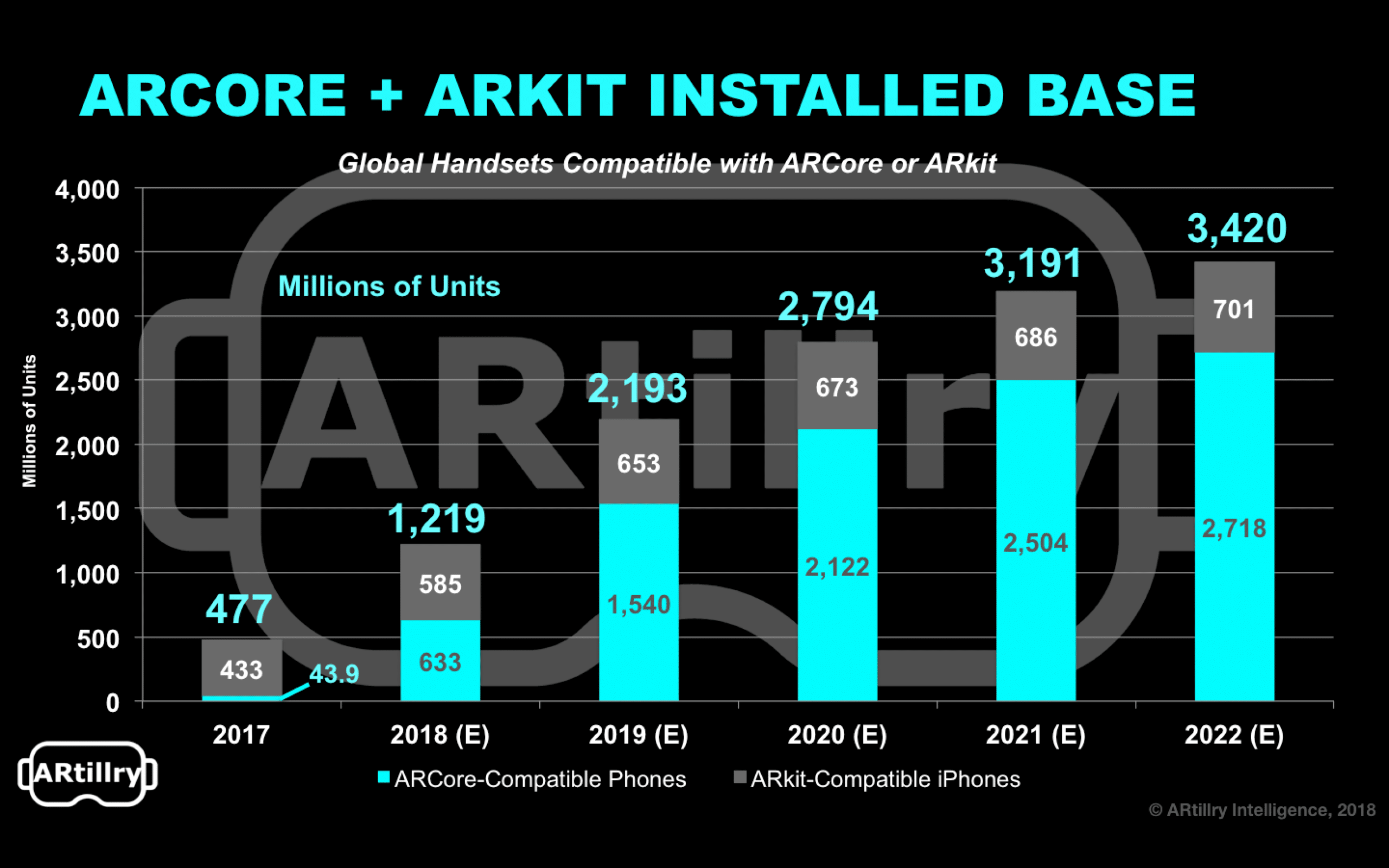
Though the AR cloud will be a great enabler, there will be challenges and questions that surround it. Technical challenges have been well documented, but there are also adjacent challenges like cultural and legal barriers.
Here is the third installment of our drill-down on a few of those challenges. The first installment, covering location targeting and opt-in friction, can be seen here. And the second piece on legalities of the AR Cloud (intellectual property, “digital trespassing” etc.) is here.
Delivering AR: Apps vs. Web?
Another question surrounding the AR cloud, and AR in general, is the delivery vessel. Because we live in such an app-centric world — partially driven by Apple’s influence and vested interest in apps — they’re the heir-apparent modality for mobile AR. But are apps the optimal format?
Many AR thought leaders are asking that very question and doubting if the app-heavy paradigm that ruled the smartphone era is best for AR. The thought is that AR’s existing adoption challenges are exacerbated by the friction and latency of finding and downloading disparate apps.
“You effectively have all the same problems that a mobile app has,” Presence Capital partner Amitt Mahajan told ARtillry last year. “You have to convince someone to download it, and convince them to come back every day. All of the friction to get to that experience is still pretty high.”
The Web has a chance to crack open the App Store duopoly as we move to AR & VR. "Apps" don't make sense in AR, but linking "things" does.. https://t.co/Nk3fuq0O1U
— Matt Miesnieks (@mattmiesnieks) August 29, 2017
Download Friction
Why is this important to the AR Cloud? App download friction makes them incongruent with the AR cloud’s (proposed) dynamic ways of delivering data to devices. Beyond friction for users, apps are disadvantaged by their lack of interoperability compared to the link-structured web.
This could be an important question as it relates to the matter of networked AR experiences. It will be a key tenet of the AR cloud and collaborative/social AR, which could drive killer apps. So the question is: Will AR apps or web AR be more friendly towards multi-player capacity?
Beyond technicalities of which format can better connect to other users and to the AR Cloud, there’s a practical question of dynamic “pick-up” multi-player sessions. Could they be saddled by the need for all parties to stop and download the right app? Web AR could have the edge there.
We’re already seeing a similar dynamic in high-value consumer verticals like retail. One historical parallel is retail beacons. Everyone thought they were a good idea, but they fell flat due to requirements for users to download specific apps and adjust system settings like Bluetooth.
“We’ve seen some interest in AR for brick & mortar shopping,” StepsAway CEO Allan Haims told ARtillry. “But ultimately there’s not enough user adoption yet, and the friction is too high to download apps to use AR. Similar friction has been the challenge with retail beacons.”

Strength in Numbers
The apps v. web outcome could also be influenced by Google. Just as Apple has a vested interest in apps, Google’s DNA leads it to all things web. It openly supports web AR, as part of its overall XR strategy. Given Google’s strength, it could steer how mobile AR is delivered.
But influence could ultimately be greatest from whoever attracts the most users and developers. Apple has the nearer-term scale in device compatibility, while Google has a longer-term edge with Android’s installed base. And let’s not forget the scale Facebook will reach with Camera Effects.
Beyond influence from tech giants, it could be the best consumer experience that wins. Apps have greater functionality, but could web AR catch up? It won’t be winner take all: they’ll coexist as iOS and Android have for years. And the right answer could be somewhere in the middle.
These dynamics should be watched closely by anyone deciding where to apply development resources, and which distribution channels are optimal. Though web AR is currently inferior to apps in functionality, it could gain ground as the AR cloud’s longer-term vessel of choice.
For deeper XR data and intelligence, join ARtillry PRO and subscribe to the free ARtillry Weekly newsletter.
Disclosure: ARtillry has no financial stake in the companies mentioned in this post, nor received payment for its production. Disclosure and ethics policy can be seen here.
